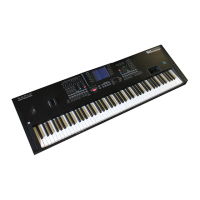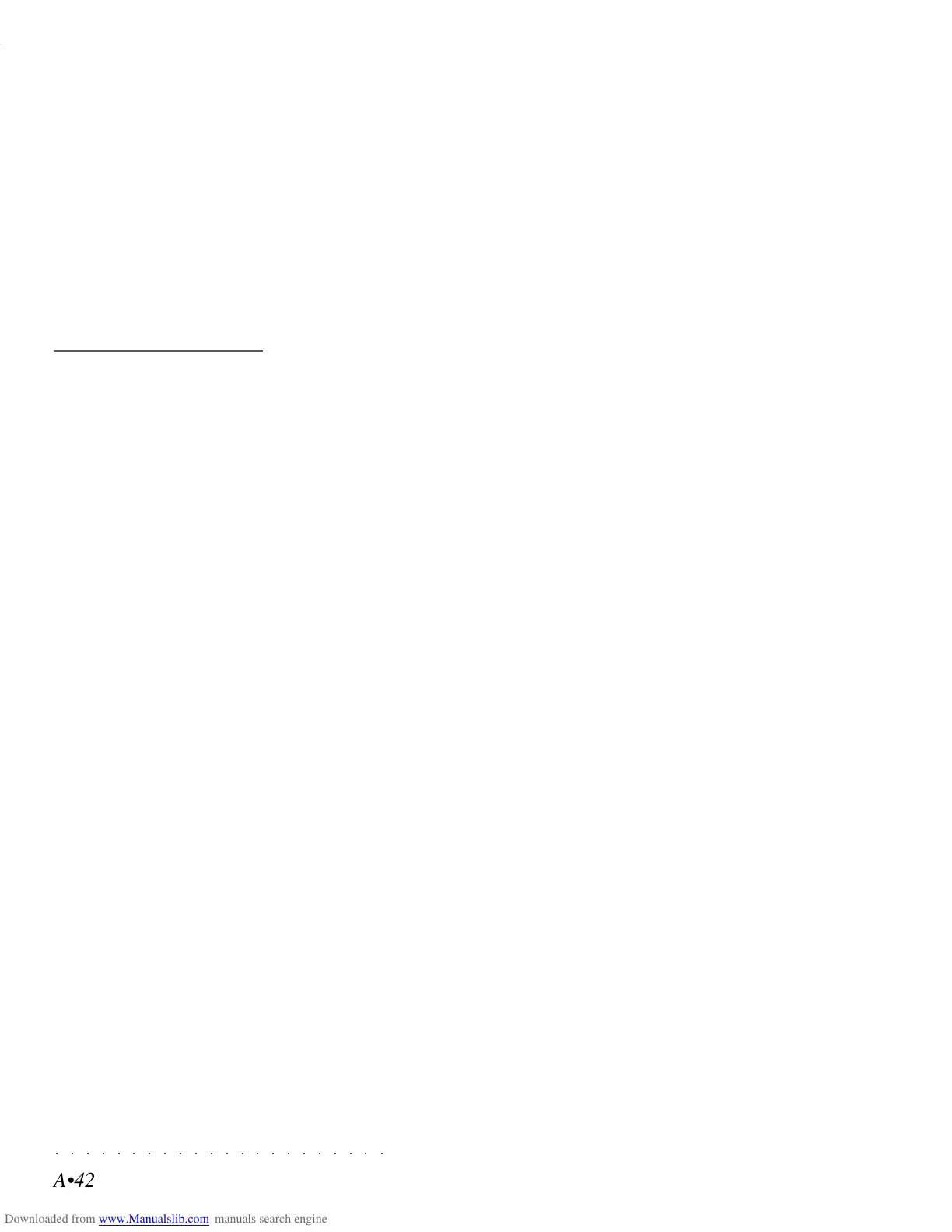○○○○○○○○○○○○○○○○○○○○○○
A•42 Appendix
○○○○○○○○○○○○○○○○○○○○○○
A•42 Appendix
};
ushort date;
} ; // total 2 bytes
struct F_HEAD {
unsigned char name[8],ext[3],flags; // 12
TIME_INF time; // 2
DATE_INF date; // 2
long length; // 4
}; // total 20 bytes
For completion, the description of the file inside the HEADER.hdr refers instead to a more complex stucture:
struct F_HEADER {
F_HEAD f;
char name[16];
long offset;
};
Creation of the Resource Header
Before sending the Resource File, a Resource Header is sent which describes the entire Data File which is then sent. The Format of the file is the
following:
bytes rel.addr. name description
1 0 resource type Resource ID
1 1 nfile number of file
4 2 len total length of the effective binary resource file
15 6 name name of the complete structure associated to the file
for a total length of files equal to 21 bytes.
};
ushort date;
} ; // total 2 bytes
struct F_HEAD {
unsigned char name[8],ext[3],flags; // 12
TIME_INF time; // 2
DATE_INF date; // 2
long length; // 4
}; // total 20 bytes
For completion, the description of the file inside the HEADER.hdr refers instead to a more complex stucture:
struct F_HEADER {
F_HEAD f;
char name[16];
long offset;
};
Creation of the Resource Header
Before sending the Resource File, a Resource Header is sent which describes the entire Data File which is then sent. The Format of the file is the
following:
bytes rel.addr. name description
1 0 resource type Resource ID
1 1 nfile number of file
4 2 len total length of the effective binary resource file
15 6 name name of the complete structure associated to the file
for a total length of files equal to 21 bytes.
○○○○○○○○○○○○○○○○○○○○○○○○○○○○○○○○○○○
Contents i
○○○○○○○○○○○○○○○○○○○○○○○○○○○○○○○○○○○
Contents i
Contents
Introduction i
QUICK GUIDE
Chapter 1 • Layout & Display 1. 1
Front layout 1. 1
Rear panel connections 1. 2
The display 1. 3
Navigation, Data Entry, Confirmation/cancellation 1. 3
Alphanumeric entry 1. 4
Getting to know your instrument 1. 9
Adjust the general volume 1. 9
Power up 1. 9
Play with headphones 1. 10
Play with the pedals 1. 10
Play with the wheels 1. 11
Play the Programmable Pads 1. 11
Select sounds 1. 12
Change Sound Bank 1. 13
Play on a split keyboard 1. 13
Return to full keyboard playing 1. 14
Play up to 8 sounds at the same time (Multi) 1. 15
Using the Keypad to Select Sounds 1. 16
Adjust the sound volumes separately (balancing) 1. 17
The SOLO button - Isolate a single sound from the rest 1. 18
Listen to the Demo Songs 1. 19
Multimedia 1. 21
Automatic loading of Songs at power up 1. 22
To display lyrics on an external monitor 1. 23
Play with Auto Accompaniment Styles 1. 24
Start a Style with Key Start 1. 27
Start a Style with Tap Tempo 1. 28
Start and stop a Style with Fade In/Out 1. 28
Select a Style without changing the keyboard sounds 1. 28
Select and play the Flash memory User Styles 1. 29
Select a Style Performance 1. 30
Select the Performances 1. 31
Saving to the same Performance 1. 33
Store Performance 1. 33
Saving to a different Performance 1. 34
Transpose the instrument up or down 1. 35
To clear the keyboard transpose setting 1. 35
Transposition 1. 35
Transposing tracks by octaves 1. 36
To clear the Track Octave setting 1. 36
Bypass the effects 1. 37
To activate the effects 1. 37
Play with Effects or bypass them 1. 37
Using the Midi File Player 1. 38
Loading data into RAM memory 1. 40
Quick Rec Recording 1. 42
Record a Song (Quick rec.) 1. 42
Play along with your recorded Song 1. 44
Save your programmed data to disk or Hard Disk 1. 45
Contents
Introduction i
QUICK GUIDE
Chapter 1 • Layout & Display 1. 1
Front layout 1. 1
Rear panel connections 1. 2
The display 1. 3
Navigation, Data Entry, Confirmation/cancellation 1. 3
Alphanumeric entry 1. 4
Getting to know your instrument 1. 9
Adjust the general volume 1. 9
Power up 1. 9
Play with headphones 1. 10
Play with the pedals 1. 10
Play with the wheels 1. 11
Play the Programmable Pads 1. 11
Select sounds 1. 12
Change Sound Bank 1. 13
Play on a split keyboard 1. 13
Return to full keyboard playing 1. 14
Play up to 8 sounds at the same time (Multi) 1. 15
Using the Keypad to Select Sounds 1. 16
Adjust the sound volumes separately (balancing) 1. 17
The SOLO button - Isolate a single sound from the rest 1. 18
Listen to the Demo Songs 1. 19
Multimedia 1. 21
Automatic loading of Songs at power up 1. 22
To display lyrics on an external monitor 1. 23
Play with Auto Accompaniment Styles 1. 24
Start a Style with Key Start 1. 27
Start a Style with Tap Tempo 1. 28
Start and stop a Style with Fade In/Out 1. 28
Select a Style without changing the keyboard sounds 1. 28
Select and play the Flash memory User Styles 1. 29
Select a Style Performance 1. 30
Select the Performances 1. 31
Saving to the same Performance 1. 33
Store Performance 1. 33
Saving to a different Performance 1. 34
Transpose the instrument up or down 1. 35
To clear the keyboard transpose setting 1. 35
Transposition 1. 35
Transposing tracks by octaves 1. 36
To clear the Track Octave setting 1. 36
Bypass the effects 1. 37
To activate the effects 1. 37
Play with Effects or bypass them 1. 37
Using the Midi File Player 1. 38
Loading data into RAM memory 1. 40
Quick Rec Recording 1. 42
Record a Song (Quick rec.) 1. 42
Play along with your recorded Song 1. 44
Save your programmed data to disk or Hard Disk 1. 45

